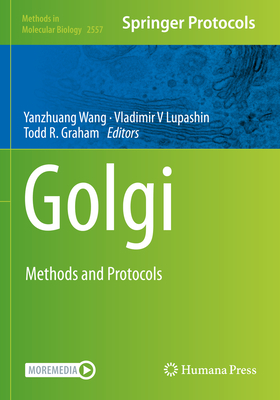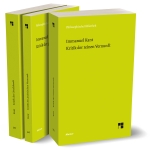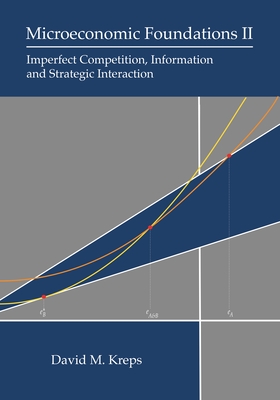图书简介
This volume provides readers with a collection of new and classical methods, techniques, and applications used to address enduring questions about the structure and functions of the Golgi complex. The chapters in this volume cover diverse topics ranging from model systems; live and fixed cell imaging techniques; in vitro biochemical reconstitution systems; and specific methods developed to study Golgi formation, maintenance, and functions under physiological and pathological conditions. Written in the highly successful Methods in Molecular Biology series format, chapters include introductions to their respective topics, lists of the necessary materials and reagents, step-by-step, readily reproducible laboratory protocols, and tips on troubleshooting and avoiding known pitfalls.Cutting-edge and authoritative, Golgi: Methods and Protocols is a valuable tool for researchers in the field who wish to explore new areas of Golgi biology and for new investigators interested in exploring Golgi structure and function.
Live Cell Imaging of Yeast Golgi Dynamics.- Quantification of Golgi Protein Mislocalization to the Budding Yeast Vacuole.- Immunofluorescence as a Method to Study Golgi Organization in Larval Salivary Glands of Drosophila melanogaster.- Microscopy and Immunocytochemistry-Based Methods to Study Cell Wall Biosynthetic Enzymes in the Golgi.- Reconstitution of Golgi Biogenesis in Permeabilized Trypanosoma brucei Cells.- Generation of GM130 Conditional Knockout Mouse.- Monitoring Effects of Membrane Traffic via Changes in Cell Polarity and Morphogenesis in Three-Dimensional Human Pluripotent Stem Cell Cysts.- Immunofluorescence Microscopy of the Mammalian Golgi Apparatus.- Studying the Organization of the Golgi by Super-Resolution Microscopy.- Super-Resolution Live Imaging of Cargo Traffic Through the Golgi Apparatus in Mammalian Cells.- Studying Golgi Structure and Function by Thin Section TEM.- Algorithm for Modern Electron Microscopic Examination of the Golgi Complex.- High-Pressure Freezing Followed by Freeze-Substitution, An Optimal Electron Microscope Technique to Study Golgi Apparatus Organization and Membrane Trafficking.- Negative Staining Electron Microscopy for Morpho-Functional Characterization of Purified Golgi Membranes from Mammalian Cells.- An Electron Tomographic Analysis of Giantin Deficient Golgi Proposes a New Function of the Golgin Protein Family.- Modeling the Cryo-EM Structure of the Exocyst Complex.- Quantitatively Assessing Co-Localization of Golgi Proteins by Distance Analysis Using the DiAna Software.- A Primer on Deep Learning-Based Cellular Image Classification of Changes in the Spatial Distribution of the Golgi Apparatus After Experimental Manipulation.- Reconstituting Vesicle Budding from the TGN and Immunoisolation of Vesicles Enriched with a Specific Cargo Client.- Common Assays in Mammalian Golgi Studies.- In Vitro Methods to Investigate the Disassembly of the Golgi Ribbon during the G2-M Transition of the Cell Cycle.- Generation and Analysis of hTERT-RPE1 VPS54 Knock-Out and Rescued Cell Lines.- Rapid COG Depletion in Mammalian Cell by Auxin-Inducible Degradation System.- Generation of Stable Cell Lines Expressing Golgi Reassembly Stacking Proteins (GRASPs) by Viral Transduction.- Quantitative Proteomics Analysis of Purified Rat Liver Golgi.- Comparative Genomics for Evolutionary Cell Biology using AMOEBAE: Understanding the Golgi and Beyond.- Common Markers and Small Molecule Inhibitors in Golgi Studies.- Visualizing Reversible Cisternal Stacking in Budding Yeast Pichia pastoris.- Methods for Studying Membrane-Proximal GAP Activity on Prenylated Rab GTPase Substrates.- Studying the Role of Lipid Geometry in COPI Vesicle Formation.- Unbiased Quantification of Golgi Scattering and Golgi-Centrosome Association.- Detection and Analysis of Microtubule Nucleator γ-Tubulin Ring Complex.- Quantification of Golgi Entry and Exit Kinetics of Protein Cargoes.- CARTS Formation Assay.- Quantification of Protein Exit at the Trans-Golgi Network.- Endosomal Transport to Lysosomes and the Trans-Golgi Network in Neurons and Other Cells: Visualizing Maturational Flux.- Immunoprecipitation and Western Blot Analysis of AP-1 Clathrin-Coated Vesicles.- Live imaging of Golgi Outposts in Drosophila Dendritic Arbors.- Targeted Protein Unfolding at the Golgi Apparatus.- Modeling N-Glycosylation: A Systems Biology Approach for Evaluating Changes in the Steady State Organization of Golgi Resident Proteins.- Simple N-Glycan Profile Analysis Using Lectin Staining, Mass Spectrometry, and GlycoMaple.- In Vitro Methods to Study the Golgi Apparatus Role in Proteoglycan and Glycosaminoglycan Synthesis.- Analysis of Golgi Pr
Trade Policy 买家须知
- 关于产品:
- ● 正版保障:本网站隶属于中国国际图书贸易集团公司,确保所有图书都是100%正版。
- ● 环保纸张:进口图书大多使用的都是环保轻型张,颜色偏黄,重量比较轻。
- ● 毛边版:即书翻页的地方,故意做成了参差不齐的样子,一般为精装版,更具收藏价值。
关于退换货:- 由于预订产品的特殊性,采购订单正式发订后,买方不得无故取消全部或部分产品的订购。
- 由于进口图书的特殊性,发生以下情况的,请直接拒收货物,由快递返回:
- ● 外包装破损/发错货/少发货/图书外观破损/图书配件不全(例如:光盘等)
并请在工作日通过电话400-008-1110联系我们。
- 签收后,如发生以下情况,请在签收后的5个工作日内联系客服办理退换货:
- ● 缺页/错页/错印/脱线
关于发货时间:- 一般情况下:
- ●【现货】 下单后48小时内由北京(库房)发出快递。
- ●【预订】【预售】下单后国外发货,到货时间预计5-8周左右,店铺默认中通快递,如需顺丰快递邮费到付。
- ● 需要开具发票的客户,发货时间可能在上述基础上再延后1-2个工作日(紧急发票需求,请联系010-68433105/3213);
- ● 如遇其他特殊原因,对发货时间有影响的,我们会第一时间在网站公告,敬请留意。
关于到货时间:- 由于进口图书入境入库后,都是委托第三方快递发货,所以我们只能保证在规定时间内发出,但无法为您保证确切的到货时间。
- ● 主要城市一般2-4天
- ● 偏远地区一般4-7天
关于接听咨询电话的时间:- 010-68433105/3213正常接听咨询电话的时间为:周一至周五上午8:30~下午5:00,周六、日及法定节假日休息,将无法接听来电,敬请谅解。
- 其它时间您也可以通过邮件联系我们:customer@readgo.cn,工作日会优先处理。
关于快递:- ● 已付款订单:主要由中通、宅急送负责派送,订单进度查询请拨打010-68433105/3213。
本书暂无推荐
本书暂无推荐















